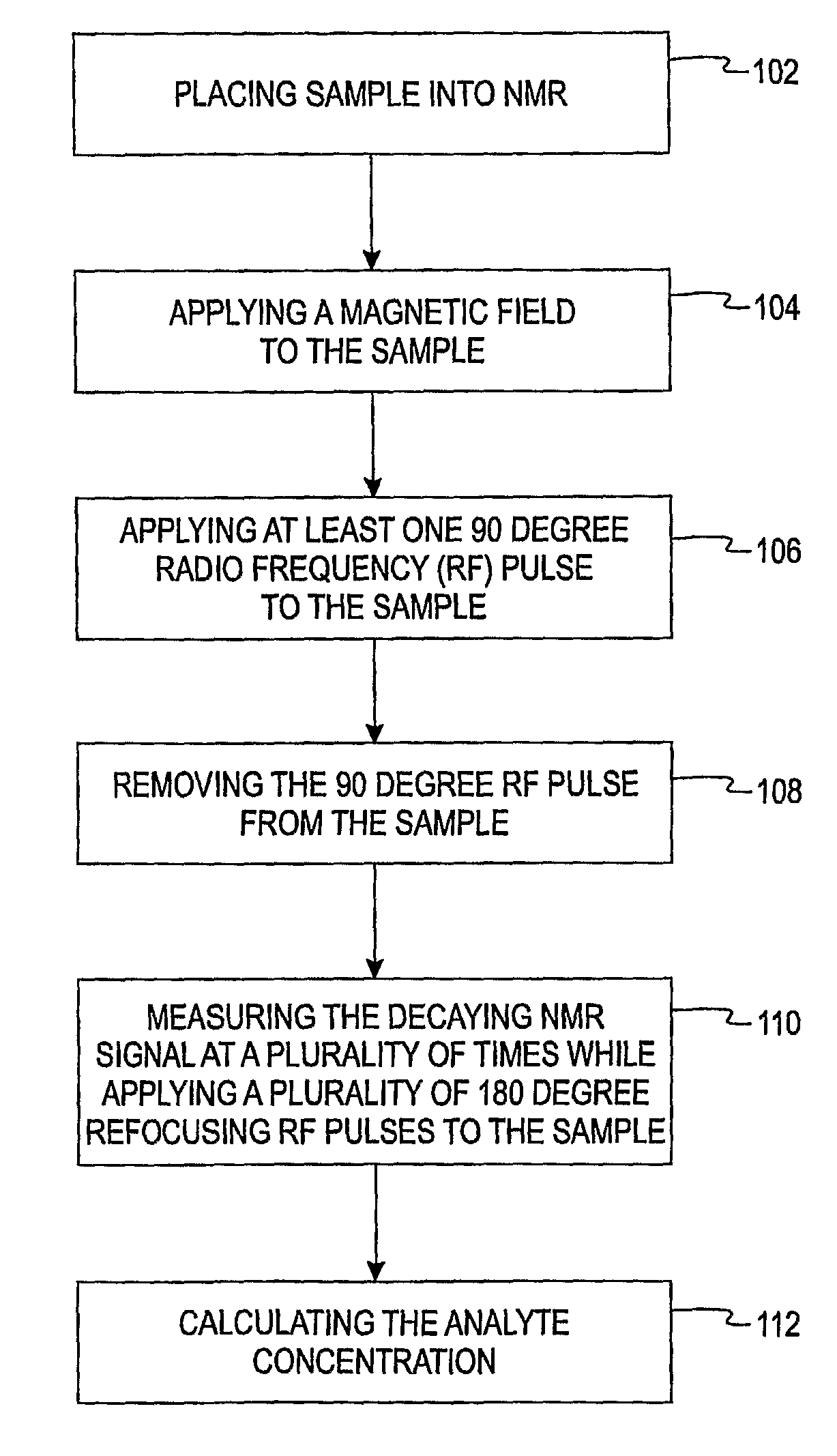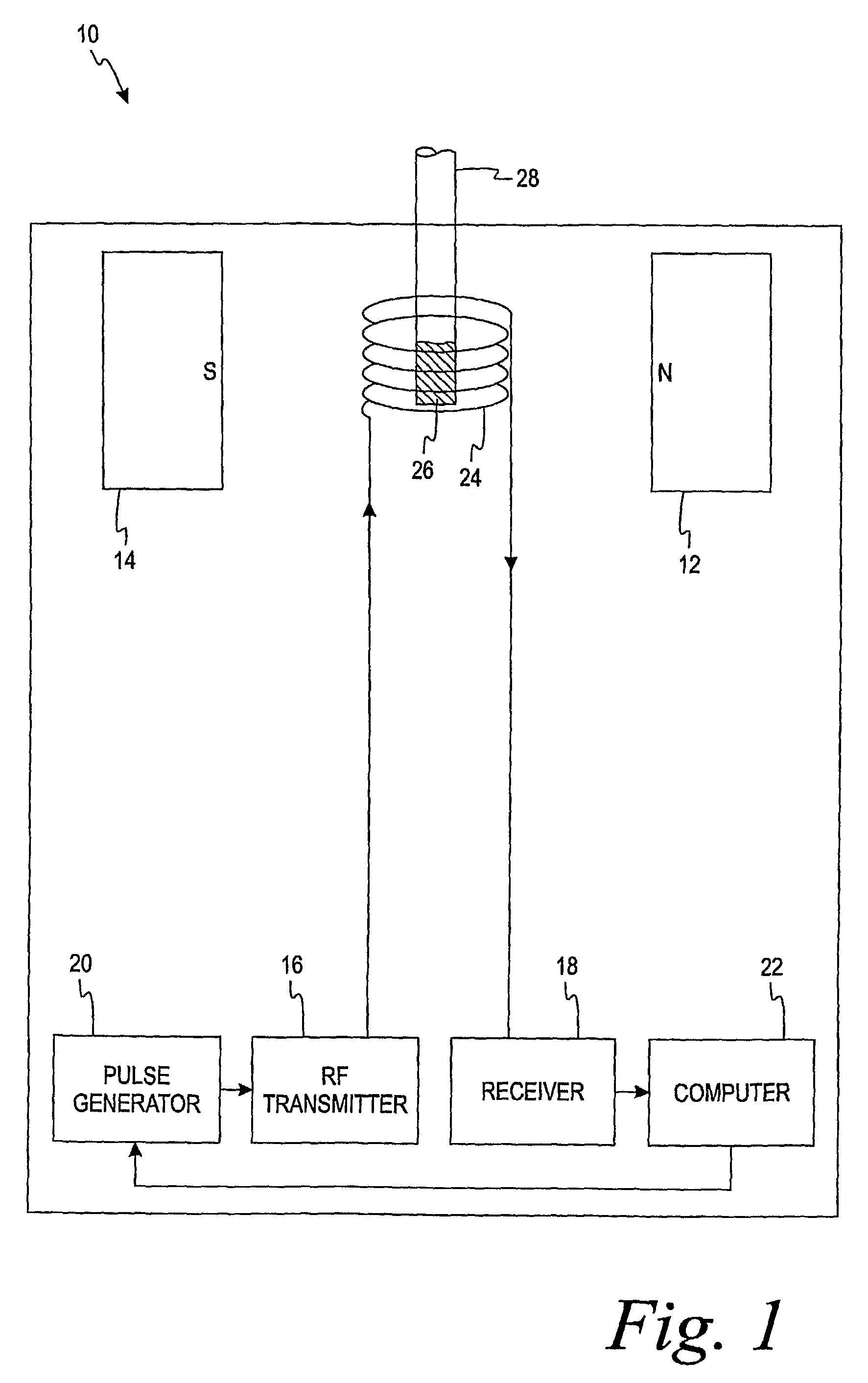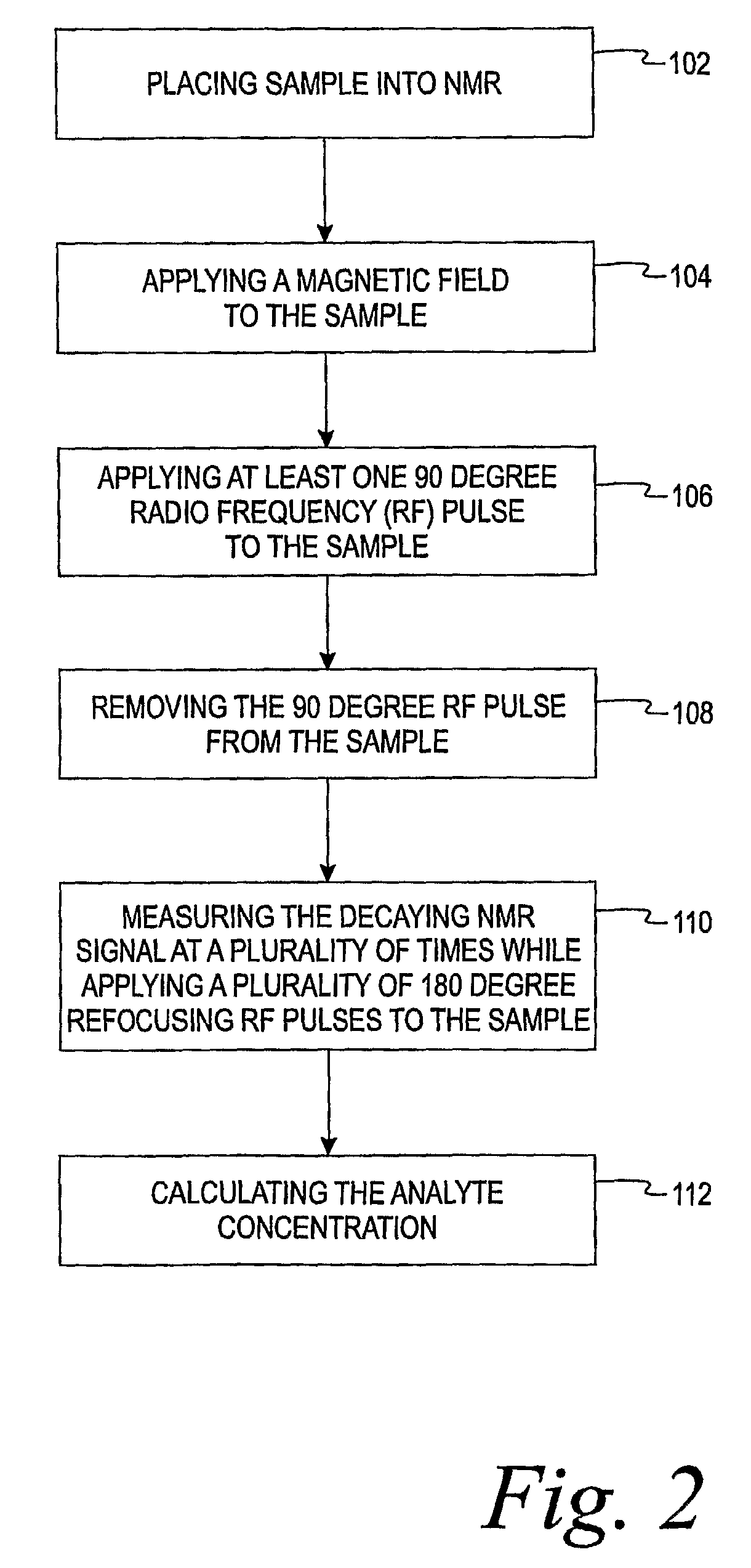Methods of in vitro analysis using time-domain NMR spectroscopy
a time-domain, nmr spectroscopy technology, applied in the direction of analysis using nuclear magnetic resonance, using reradiation, instruments, etc., can solve the problems of high cost of nmr systems that utilize superconducting magnets, cryogenic cooling, and limited field strength
- Summary
- Abstract
- Description
- Claims
- Application Information
AI Technical Summary
Benefits of technology
Problems solved by technology
Method used
Image
Examples
Embodiment Construction
[0013]The present invention is directed to a method of using a time-domain nuclear magnetic resonance (TD-NMR) spectrometer to determine the analyte concentration of a sample. The method is done in vitro and may be performed without using reagents. The term, in vitro, is defined herein as being an artificial environment outside the living organism (e.g., a petri dish or test tube). The present invention is anticipated to be used in hospitals and clinics, but it is contemplated that it may be used in other locations.
[0014]Some non-limiting examples of analytes that may be monitored in certain individuals include glucose, cholesterol (e.g. HDL, LDL, total), triglycerides, globulin, albumin, total protein, blood urea nitrogen, alkaline phosphastase, and creatinine. The present invention is not limited, however, to these specific analytes. The analytes may be in, for example, body fluid such as a blood serum sample, a blood plasma sample or a urine sample.
[0015]The spectrometer is a low...
PUM
 Login to View More
Login to View More Abstract
Description
Claims
Application Information
 Login to View More
Login to View More - R&D
- Intellectual Property
- Life Sciences
- Materials
- Tech Scout
- Unparalleled Data Quality
- Higher Quality Content
- 60% Fewer Hallucinations
Browse by: Latest US Patents, China's latest patents, Technical Efficacy Thesaurus, Application Domain, Technology Topic, Popular Technical Reports.
© 2025 PatSnap. All rights reserved.Legal|Privacy policy|Modern Slavery Act Transparency Statement|Sitemap|About US| Contact US: help@patsnap.com



